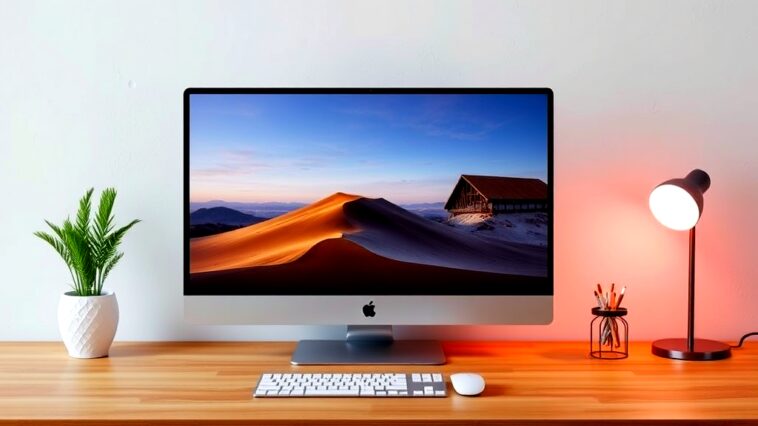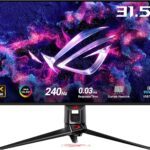Introduction
Have you ever heard someone talk about the “resolution” of a TV or computer screen? It sounds complicated, but it’s actually quite simple! Resolution just refers to the number of tiny dots, called pixels, that make up the images you see on your screen. Knowing about resolution is super important, especially if you’re thinking about buying a new display. In this article, we’ll explore everything you need to know about screen resolution to help you make smart choices.
This article has been crafted by experts in display technology and has gone through a careful fact-checking process, so you can trust the information provided. Let’s dive in!
1. Understanding Screen Resolution
So, what exactly is screen resolution? Imagine your screen is like a giant puzzle made out of little pieces, called pixels. The more pixels there are, the clearer and sharper the picture looks. Resolution is usually written in two numbers, like 1920×1080. This means there are 1920 pixels across the width of the screen and 1080 pixels down the height.
Example Breakdown: 1920×1080
- 1920: This is how many pixels there are from left to right.
- 1080: This is how many pixels there are from top to bottom.
When you multiply these numbers (1920 times 1080), you get a total of 2,073,600 pixels! That’s over two million tiny dots working together to create a beautiful picture. The higher the resolution, the better the picture quality, which is why it’s important to understand it when choosing a new screen.
2. The Relationship Between Resolution and Refresh Rate
Now that you know what resolution is, let’s talk about another important term: refresh rate. The refresh rate tells you how many times per second the screen updates the image. It’s measured in hertz (Hz). For example, a refresh rate of 60Hz means the screen refreshes the image 60 times every second.
Importance of Pairing High Resolution with High Refresh Rates
If you want a smooth and clear picture, especially for gaming or watching fast-action movies, it’s important to have a high refresh rate paired with a high resolution. For instance, if you have a 4K screen (which has a resolution of 3840×2160), but the refresh rate is only 30Hz, the picture might look choppy during fast scenes. So, when buying a display, check both the resolution and the refresh rate to ensure they work well together!
3. Screen Resolution vs. Screen Size
Another big factor to think about is the size of the screen. You might have a 24-inch monitor or a 27-inch monitor. The same resolution can look different on these two sizes. That’s where pixel density comes into play. Pixel density is measured in pixels per inch (PPI).
Comparison of 1920×1080 on Different Monitor Sizes
- 24-inch Monitor: If a 1920×1080 resolution is on a 24-inch screen, there are more pixels packed into each inch, making the picture look sharper.
- 27-inch Monitor: On a 27-inch screen with the same resolution, the pixels are more spread out, which can make the image look a little blurrier.
Ideal PPI for Various Uses
- Work: For tasks like editing documents or creating presentations, a higher pixel density (around 100-120 PPI) makes text and images clearer.
- Gaming: Gamers often prefer high resolutions (like 1440p or 4K) paired with higher refresh rates for the best experience.
4. Scaling Considerations
When you have a high-resolution display, like a 4K monitor, things can get a bit tricky. Some programs might not look right because they weren’t designed for such high pixel density. This is called scaling. It adjusts the size of text and images so they can be seen comfortably.
Recommendations for Checking Application Compatibility with Scaling
Before getting a high-resolution display, check if the programs you use will scale well. Some applications might look blurry or too small if they don’t support scaling properly.
Common Scaling Settings and Their Implications
Most operating systems allow you to adjust scaling settings. For example, you can set your display to 150% scaling, which will make everything bigger and easier to read. Just remember that not all apps will look perfect with scaling, so it’s good to test them out!
5. Viewing Distance and TV Size
When it comes to TVs, viewing distance is really important. You don’t want to sit too close or too far away from the screen. The size of the TV and its resolution will affect how you experience the picture quality.
Guidelines for Optimal Viewing Distances Based on TV Size and Resolution
- 55″ 4K TV: If you have a 55-inch 4K TV, the best distance to sit is about 4.5 to 7 feet away. This way, you can really enjoy the amazing detail that 4K resolution provides!
- 1080p TV: For a 55-inch TV with a resolution of 1920×1080, you should sit about 7 to 9 feet away for the best experience.
Other Factors Affecting TV Image Quality
Besides resolution and viewing distance, other factors can affect how good the picture looks. Things like the type of panel (LCD, OLED, etc.), color gamut, and brightness also play a huge role in picture quality. So, it’s important to consider these factors when buying a TV.
6. Common Resolutions and Their Abbreviations
Here’s a handy list of common screen resolutions and what they are called:
- 1920×1080: Known as Full HD or 1080p, this is quite popular for TVs and monitors.
- 2560×1080: This is called UWHD, which stands for ultrawide HD, great for multitasking.
- 3840×2160: Known as 4K or Ultra HD, this resolution is becoming increasingly popular for larger TVs and gaming.
- 1280×720: This is known as HD or 720p, which is the minimum resolution for good quality content.
- 7680×4320: This is referred to as 8K, which provides incredibly sharp images but requires a lot of processing power.
7. Screen Resolution in Gaming
For gamers, resolution is critical. You want to ensure that your monitor can handle the resolution and refresh rate for a smooth experience.
Importance of Matching Resolution and Refresh Rate for Gaming Monitors
If you’re playing a fast-paced game on a 1440p monitor with a refresh rate of 144Hz, you’ll enjoy smoother gameplay compared to a 1080p monitor with a 60Hz refresh rate.
Recommendations for Hardware Requirements for Different Resolutions
- 1080p Gaming: A decent gaming PC with an entry-level graphics card will work fine.
- 1440p Gaming: You’ll need a mid-range graphics card for a good experience.
- 4K Gaming: This requires a high-end graphics card to maintain high frame rates.
Importance of Checking Benchmarks for Desired Performance
When buying a new graphics card, check performance benchmarks for the specific games you want to play at your desired resolution. This will help you see if your hardware can handle it without lagging.
Conclusion
In summary, understanding screen resolution is crucial for making informed decisions when purchasing displays. The resolution determines how clear and detailed the pictures will be, while factors like refresh rate, screen size, and viewing distance can greatly influence your viewing experience.
Whether you’re using a screen for work, gaming, or watching movies, choosing the right resolution can make all the difference. So next time you’re shopping for a new monitor or TV, remember to consider these key points!
If you want to learn more, feel free to check out our related articles for further information. Happy viewing!
Other Related Articles
- Eizo Foris FS2331 Review
- How Much Power Does a 144Hz Monitor Use? A Deep Dive into Energy Consumption
- Should I Turn On HDR for Gaming? A Comprehensive Guide
- Is iPhone 16 Pro OLED the Best Display Yet?
- Understanding Panel Variance: What It Means for Your Monitor Purchase
- Can You Throw Computer Monitors in the Trash? The Ultimate Guide to Eco-Friendly Disposal
- Understanding VESA ClearMR: The Future of Motion Clarity in Displays
- 4K vs 1080p – Is UHD Worth The Upgrade?
- How To Choose The Right Gaming Monitor: A Comprehensive Guide
- IPS vs OLED Monitors for Color Accuracy: The Ultimate Showdown
- HDMI 2.1: The Future of Home Entertainment and Gaming
- How to Connect Heart Rate Monitor to PC?
- Curved vs Flat TV – Which Should You Choose? The Ultimate Showdown for 2025
- Can You Connect M-Audio Monitors to PC?
- Why Is My PC Showing the Same Display on Two Monitors?
- Why Are Computer Monitors More Expensive Than TVs?
- The Best Flicker-Free Monitors for Eye Care
- Monitors for Mac vs Windows PCs: The Ultimate Showdown
- 1920×1080 vs 2560×1440 – Which One Should I Choose?
- 99219444 Toshiba and Its Revolutionary Features for Tomorrow’s Tech Landscape
- OLED vs QD-OLED: The Showdown of Display Technologies
- What Is DisplayPort 2.1?
- What Is The Best Monitor Size For Gaming?
- 720p vs 1080p vs 1440p vs 4K vs 8K – Which Should I Choose?
- Is An HDR Gaming Monitor Worth It?
- Mini-LED vs MicroLED: What’s the Difference?
- Do Pawn Shops Take Computer Monitors?
- What LG Computer Monitor is as Good as the C3?
- Understanding Pixel Walk and Pixel Inversion
- Curved vs Flat Monitors for Work: Which One is Right for You?
- What Is The Soap Opera Effect?
- 4K vs 1440p Monitors for Video Editing: Which One Should You Choose?
- Do I Have to Attach a Hood to My BenQ Monitor?
- Can You Use Mac as a Monitor for PC?
- What Is G-SYNC And What Does It Do?
- Daz Studios Summoner G8 for the Visionary Artist
- Dell vs HP Monitors for Gaming
- Understanding IPS Technology: A Comprehensive Guide
- 27-Inch Monitors vs 32-Inch Monitors for Productivity
- Understanding Screen Resolution: Why It Matters for Your Displays
- How to Transport Computer Monitors?
- How to Dispose of Computer Monitors?
- What Is 4K Resolution And Is It Worth It?
- How to Pack Computer Monitor for Moving?
- What Is HDR For TVs And Is It Worth It?
- 1440p or 144Hz – Which Is Best For You?
- USB Type-C Explained – Everything You Need To Know
- Samsung’s Exciting Journey into Glasses-Free 3D Displays at Gamescom 2024
- I Have A Problem with My Samsung Odyssey G3 Monitor Setup
- Is A 144Hz Monitor Worth It? A Comprehensive Guide
- Understanding FALD Blooming and the Halo Effect: A Deep Dive
- What Does 144Hz Mean? Understanding Refresh Rates in Simple Terms
- Is an UltraWide Monitor the Right Choice for You?
- Active vs Passive 3D – What’s The Difference?
- Understanding Glare Control in Luminaires for Computer Users
- Why Does My Acer Monitor Keep Going Black?
- Understanding Motion Blur Reduction: A Gamer’s Guide
- How to Connect Studio Monitors to PC?
- Misleading Monitor Specifications You Should Look Out For
- QLED vs OLED – Which Is Best?
- Understanding VESA AdaptiveSync and MediaSync: The Future of Display Technology



